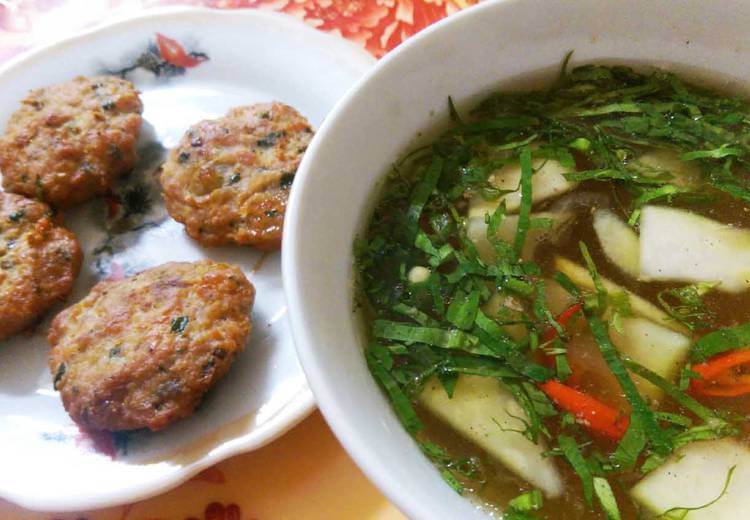If in Cao Bang there are duck meat rolls, in Hanoi there are Thanh Tri rolls and egg rolls with egg rolls in the old town, in Ho Chi Minh City there are rolls “Our village’s rice grain”… then in Tuyen Quang there are dishes. Banh cuon ball is very special.

Cha is made from local pork, delicious and firm, after minced, the meat will be mixed with shiitake mushrooms and highland wood ear mushrooms, then into small balls, fried before serving. with rolls.
The difference of Tuyen Quang rolls is in the dipping sauce. If someone has had the opportunity to try banh cuon dishes in different regions, they will see the difference in the sauce of Tuyen Quang banh cuon.
Source: Collected internet.
Vietnam is an exciting country for tourism and investment. Bustling street life, delicious cuisine and majestic scenery all await you. A country constantly in motion, Vietnam always balances young urban culture with traditional values. In the city, ancient temples are just a turn away from modern shops. In the countryside, life still flows along the rivers and harvests. This contrast between old and new makes up a large part of Vietnam's appeal. Another reason to visit Vietnam is its natural beauty. The North has majestic mountains and beautiful limestone bays. The Central Coast Road leads to historical relics and romantic beaches. And in the South, the sleepless life of Ho Chi Minh City and the riverside villages in the Mekong Delta will make you want to linger forever.
Vietnam is a country with 54 different ethnic groups, each of which has its own unique and impressive culture and identity. It is this difference in ethnic composition that has contributed to creating a very diverse, rich and unique beauty for Vietnam's culture that no other country can replace. Customs in Vietnam have a long tradition spanning thousands of years, it has become customary law, deep and firmly embedded in the hearts of every Vietnamese person.
Religion in Vietnam is quite diverse, including Buddhism (both Mahayana, Theravada and some modified groups such as Hoa Hao, Tu An Hieu Nghia); Christianity (including Catholicism and Protestantism); endogenous religions such as Cao Dai; and some other religions (Hinduism and Islam). Different types of folk beliefs also have a lot of influence. The majority of Vietnamese people consider themselves non-religious, even though they still go to religious sites several times a year...
Located on the banks of Ka Long, the border river between Vietnam and China, Xa Tac Temple, Mong Cai City, Quang Ninh Province, is not only a place to worship and practice folk cultural beliefs of residents. This place also has significance as a cultural milestone, affirming the sacred sovereignty of the Fatherland. Recently, this hundreds of years old historical and cultural relic was recognized by the Ministry of Culture, Sports and Tourism as a National relic because of its unique values....